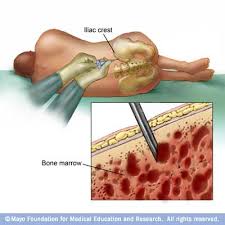MDS (or Myelodysplastic Syndromes) generally refer to a group of blood cancers. Other types of MDS are non-progressive and may have no definite effect on the patient's health. While other sub-types are slow-progressive and may be related to leukemia, which will definitely have serious effects on one's health and life expectancy.
Myleodysplastic syndromes typically affect the cell-forming activities in the bone marrow. These cells are normally developed into mature red or white blood cells and platelets before they flow out to bloodstream. Myleodysplastic syndromes prevent blood cell formation. When blast cells in the bone marrow and blood are significantly higher, but dying before or after release into the bloodstream; the non-functional cells will continuously build-up inside the bone marrow. These abnormal activities of the blood cells may develop into a disease called MDS Leukemia.
In many cases, myleodysplastic syndromes will worsen into a type of leukemia - MDS Leukemia. When blast cell occurrence is in low proportions, doctors refer to the disorder as MDS. When there are higher proportions, the condition has worsened into a cancerous stage and is referred as MDS Leukemia. Thus, MDS and Leukemia are often joined together and have same methods of treatment.
The number of new cases of MDS in the United States is unknown. However, medical reports shown that the number of MDS cases is equivalent to the number of patients suffering from acute myelogenous leukemia (AML). Around 12,000 people were diagnosed with AML in 2006.
AML is incurable and often found in patients 60 years of age and above; but less common in children.
David Austin is an Attorney focused on complex injury cases. You can learn more about MDS Leukemia at his website. Burke-Eisner.com
For Further Reading,


